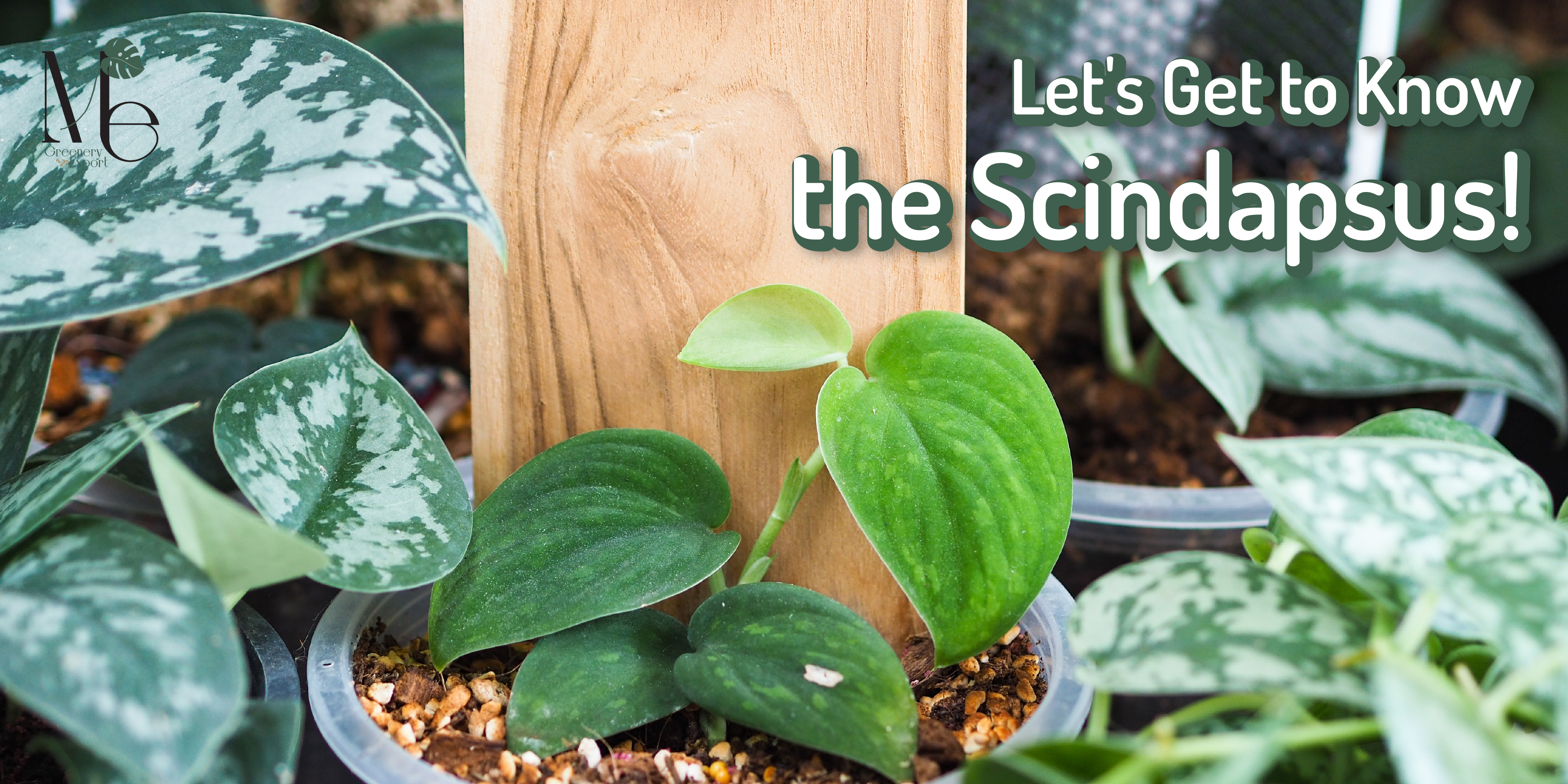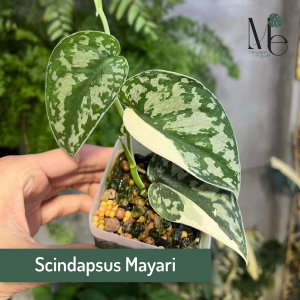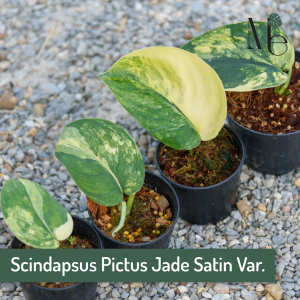No products in the cart.
Let’s Get to Know the Scindapsus!
DATE : June 22, 2023 By : admin

If you have seen the products on our website, you may have seen the “Scindapsus”. Some people may wonder what this genus is, where does it come from, and how is it grown? Do not worry. If you are not familiar with Scindapsus, we will introduce it. Okay, if you are ready, let’s see it!
The Origin of the Scindapsus
The Scindapsus is a member of the Araceae family native to the forests of Southeast Asia, Indonesia, and the Solomon Islands. The name Scindapsus in Greek means on a stem, as it is a creeper that is often found in the forest. It is characterized by its green vines full of beautiful leaves, which have various sizes and colors according to each species. Besides, Scindapsus is also similar to the famous plant like Epipremnum.
The Characteristics of the Scindapsus
Scindapsus is a small climbing plant. Its distinctive feature is the heart-shaped leaves arranged alternately left and right on the green vine, which can reach a length of 3 meters.
Now we already know the origin of the Scindapsus. Next, we will introduce 2 interesting plants of the Scindapsus.
Scindapsus Mayari

If you like a beautiful plant with good meaning, we recommend “Scindapsus Mayari”. The name ‘Mayari’ comes from the name of the Philippines goddess ‘Mayari’, goddess of Combat, Revolution, Equality, Beauty, Strength, Moon, and Night. The word “yari” can also be translated as ‘complete’ or ‘perfect’. Scindapsus Mayari is as gorgeous as its name. The white variegation on the bright green leaves resembles the moonlight radiating at night. Mayari also has different variegation, either white variegated from the silver veins or white variegated throughout the leaves, known as Full Moon.
How to Care for the Scindapsus Mayari
Scindapsus Mayari is a creeper, so it can be planted in many ways, whether in a pot, on the ground, or hanging on the wall. Growing in bright indirect light or under the shade of trees is ideal. Water regularly, and do not use dense soil as it will cause poor drainage and root rot problems. Do not let the environment get too dry because the leaves will wilt. Follow these ways, and your Scindapsus Mayari will grow as ideally as its name.
Scindapsus Pictus Jade Satin Var.

Another interesting Scindapsus is “Scindapsus Pictus Jade Satin Var.”. It originates in warm and humid regions such as Southeast Asia, Thailand, and the Philippines. Its distinctive feature is its heart-shaped, jade-green leaves with milky-white variegation on the leaves. Since it is a creeper, it can be planted in a variety of ways. Placing it on the bookshelf is a good resting place for your eyes because the green color of Scindapsus Pictus Jade Satin Var. will help your eyes relax.
How to Care for the Scindapsus Pictus Jade Satin Var.
How to care for Scindapsus Pictus Jade Satin Var. is simple. Plant it in a bright indirect sunlight place. If growing outdoors, plant under shade sunlight. It is a creeper so be careful with watering as it can lead to root rot. Use draining planting material such as coconut coir, moss, and perlite. Do not allow the topsoil to dry out. If the leaves start to yellow, it means your plant is getting too much water. Fertilizers can be used to increase nutrients. If you follow these suggestions, you will enjoy the beauty of your adorable Scindapsus Pictus Jade Satin Var. happily.
How about the “Scindapsus“ that we have introduced? These Scindapsus plants are interesting, right? Finally, if you are interested in Scindapsus Pictus Jade Satin Var., and Scindapsus Mayari but are still hesitant or have a question, we are happy to advise and export the best quality plants from Thailand to you in every season. 🥰
See you again on the following topic, bye<3
References:
- Scindapsus รวมทุกสายพันธุ์ที่มี รีวิวพร้อมวิธีดูแล ขยายพันธุ์ #Scindapsus #พลูหัวใจแนบ
- แนบอุรา ต้นไม้เลื้อยแห่งหัวใจที่คล้ายกัน จาก 2 สกุล Scindapsus และ Rhaphidophora
- Scindapsus Information & tips – Plant Guide – FloraStore
- Scindapsus Plants: A Beginner’s Guide – Bloombox Club
- Scindapsus, Mayari
- Jade Satin Scindapsus Plant Care
- Jade Satin Scindapsus – Complete Beginners Guide

